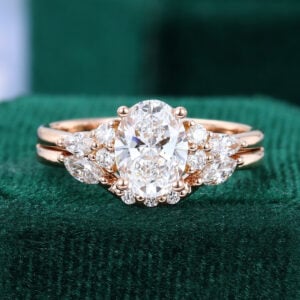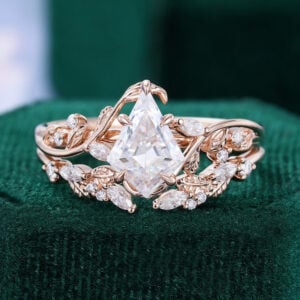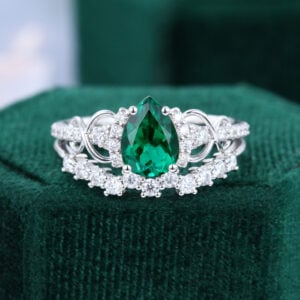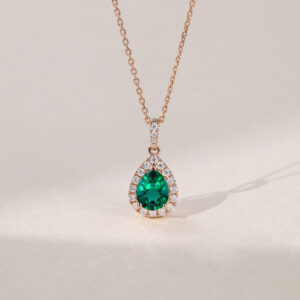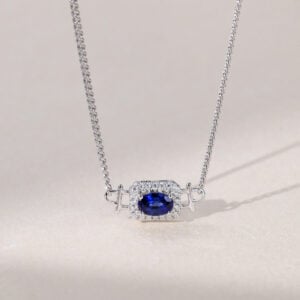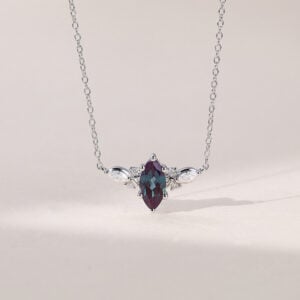In today’s quest for sustainable living and ethical consumption, ethical & sustainable jewelry has become an increasingly important topic. It is not only an accessory worn on the body, but also a commitment to human rights, environmental protection and social responsibility. So what exactly is ethical and sustainable jewelry? How can one choose jewelry that meets ethical standards? This article explores the definition, core principles, certification systems, and identification tips to help you purchase truly ethical and sustainable jewelry.
Table Of Contents:
- Definition and Core Principles of Ethical & Sustainable Jewelry
- Why Does Ethical and Sustainable Jewelry Matter?
- Key Standards and Certifications for Ethical & Sustainable Jewelry
- Main Materials Used in Ethical and Sustainable Jewelry
- How to Purchase Authentic Ethical and Sustainable Jewelry?
- Related FAQs
Definition and Core Principles of Ethical & Sustainable Jewelry
ethical and sustainable jewelry refers to jewelry that adheres to environmental protection, social fairness, and ethical standards at every stage, from raw material extraction to the final product. Unlike traditional jewelry, which is often criticized for issues like “blood diamonds”, environmental destruction, and labor exploitation, ethical and sustainable jewelry ensures transparency in the supply chain and upholds the following core values:
- Conflict-Free, Ethically Sourced Materials
Diamonds, gemstones, and precious metals must have transparent origins, strictly avoiding materials from conflict zones that fund armed conflicts, such as “conflict diamonds” or “blood minerals”. Compliance with the Kimberley Process Certification Scheme is mandatory. - Eco-Friendly Mining
Adoption of low-pollution mining technologies, such as:- Cyanide-free gold heap leaching
- Biodegradable detergents for gemstone cleaning
- Mine site ecological restoration programs
- Fair Trade
Ensuring that miners and artisans receive fair and reasonable wages, provide safety protective equipment, and prohibit child labor. - Circular Economy
Prioritize recycled metals (accounting for 30% of global gold supply) and lab-grown gemstones (reducing carbon emissions by 70%). - Animal Friendly
Protect endangered species by avoiding the use of treasured animal products such as ivory or coral.
How do understand “ethical & sustainable jewelry” if separate it into “ethical jewelry” and “sustainable jewelry”? Remember! Ethical jewelry emphasizes human rights, labor rights, fair trade and conflict-free materials. Sustainable jewelry focuses on environmental impact, emphasizing eco-friendly materials.
Why Does Ethical and Sustainable Jewelry Matter?
Have you seen the 2006 film Blood Diamond, starring Leonardo DiCaprio? The movie depicts Sierra Leone in 1999 during its brutal civil war, where rebel groups like the Revolutionary United Front (RUF) used illegal diamond trading (i.e., “blood diamonds”) to fund warfare, forcing civilians to mine diamonds under violent oppression.
The film educated a global audience about how conflict diamonds fuel wars and human rights abuses. It raised public awareness of the ethical concerns surrounding diamond consumption, resulting in a 20% short-term drop in global diamond sales. More people began to question the ethics of the jewelry industry and prioritize ethical & sustainable jewelry because it can:
- Protects human rights and prevents labor exploitation
- Preserves the environment by reducing ecological damage
- Promotes supply chain transparency and eliminates “blood diamond” trade
- Promotes sustainable development, ensuring long-term economic benefits
Key Standards and Certifications for Ethical & Sustainable Jewelry
To help consumers identify ethical and sustainable jewelry, various international organizations have established relevant standards and certifications, including:
- Kimberley Process (KP): Prevents conflict diamonds from entering the market and ensures the legal sourcing of diamonds.
- Fairmined & Fairtrade Gold: Protects miners’ rights and guarantees that gold production meets ethical standards.
- Responsible Jewellery Council (RJC) Certification: Oversees the entire supply chain to ensure compliance with social and environmental responsibility standards.
- Sustainable Jewellery Council (SCS-007): Provides certification for carbon-neutral diamonds and sustainable jewelry.
- SCS Recycled Certification: Monitors recycled materials and verifies sustainability through recycled content certification.
Main Materials Used in Ethical and Sustainable Jewelry
- Sustainably Sourced Natural Gemstones
Some jewelry brands ensure transparency in their gemstone sourcing by collaborating with ethically responsible mines or working directly with small-scale miners to prevent exploitation and environmental damage. - Lab-Grown Gemstones
Moissanite, lab-grown diamonds, sapphires, rubies, and emeralds have become popular choices for ethical and sustainable jewelry. These gems possess the same physical and chemical properties as natural gemstones but do not involve mine extraction. - Recycled Metals
Recycled gold, silver, and platinum help reduce the environmental impact of mining while giving old jewelry a second life. - Sustainable Alternatives
In addition to metals and gemstones, ethical and sustainable jewelry may incorporate sustainable materials such as reclaimed wood, plant-based resins, or sustainably harvested mother-of-pearl.
How to Purchase Authentic Ethical and Sustainable Jewelry?
- Verify Brand Commitments and Certifications
Choose brands with transparent supply chains and certifications like RJC or Fairtrade. - Know Material Sourcing
Before purchasing, inquire about the sourcing of metals and gemstones to ensure they meet ethical mining and production standards. - Opt for Recycled Metals or Lab-Grown Gemstones
If concerned about the ethical implications of natural gemstones or metals, consider recycled metals or lab-grown gemstones, which are equally beautiful and more sustainable. - Opt Handcrafted Jewelry and Small-Scale Production
Handcrafted jewelry not only offers unique designs but also supports independent jewelers and small-scale artisans, helping sustain their livelihoods. - Choose Personalized Sustainable Custom Designs
Choose custom jewelry services that allow you to select ethical materials and craftsmanship, ensuring the final piece aligns with sustainable and ethical values. - Buy Second-Hand or Antique Jewelry
Pre-owned and antique jewelry do not contribute to further environmental degradation. According to a University of London study, second-hand jewelry has only 3% of the carbon footprint compared to newly manufactured pieces. Additionally, antique jewelry from before 1940 predates modern industrial mining pollution. You need to be careful not to buy antique jewelry with conflict diamonds.
Next time you purchase jewelry, you become part of this quiet revolution. Or perhaps, Would you like to explore some ethical and sustainable jewelry now?
At MollyJewelryUS, we uphold the highest ethical and sustainable jewelry standards. We use only conflict-free diamonds, lab-grown gemstones, and recycled gold, ensuring 100% ethically sourced materials. Our jewelry is handcrafted by artisans and we make sure they are paid 35% more than the market average.
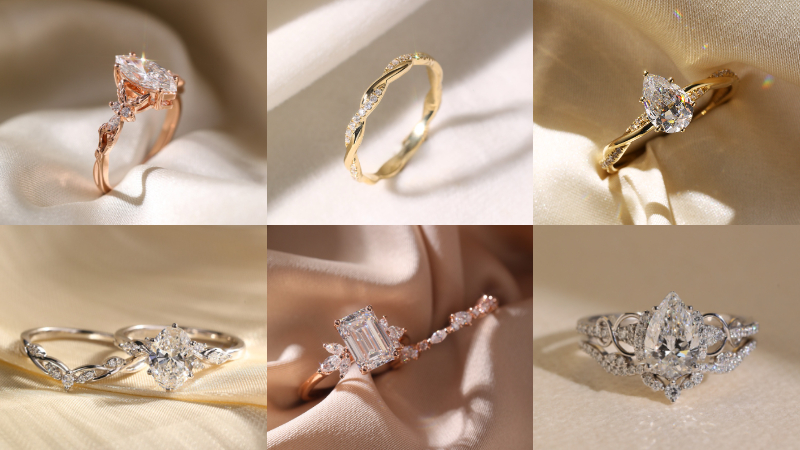
In an era where each gram of gold requires 2.8 tons of ore extraction, and each carat of diamond consumes 1,750 tons of rock, when you choose an ethical engagement ring, sustainable wedding band, or other ethical and sustainable jewelry, you’re not just acquiring a beautiful item—you’re also supporting forest regeneration programs, fair trade, animal protection…
Ethical & Sustainable Jewelry Related FAQs
Is ethical and sustainable jewelry more expensive than conventional jewelry?
It depends on materials and brands. While some ethical options (e.g., Fairtrade Gold) cost more due to higher production costs, recycled metals and lab-grown gems offer affordable sustainability. Some brands also cut costs by sourcing directly from artisans.
Does ethical and sustainable jewelry retain value?
Yes. MVI Research shows 63% of millennials pay a 15-30% premium for ethical and sustainable jewelry. Certified pieces resell at 45% higher rates (The RealReal data).
How to tell if a jewelry brand is ethical?
Look for these key indicators:
- Does the brand transparently disclose its material sources?
- Does it offer recycled metals or lab-grown gemstones as alternatives?
- Does it hold ethical or sustainable jewelry certifications?
- Does it support fair trade and protect artisan rights?
- Does it implement eco-friendly production to reduce carbon emissions?
Are lab-grown diamonds considered ethical and sustainable jewelry?
Yes! Lab-grown diamonds are 100% ethical. They have the same chemical and physical properties as natural diamonds but do not involve mining, avoiding conflict diamonds while reducing environmental harm. They’re also more affordable, offering great value for consumers.
Is buying pre-owned or antique jewelry an ethical choice?
Yes! Pre-owned or antique jewelry is one of the most sustainable choices since it requires no new mining, reducing environmental impact. Plus, it often features unique craftsmanship and historical value, making it an eco-friendly yet distinctive jewelry option.
Can buying ethical and sustainable jewelry impact the industry?
Yes! Every consumer choice drives the industry toward sustainability. As demand for transparent supply chains, fair trade, and eco-friendly jewelry grows, more brands will adopt responsible practices, improving ethical standards across the industry.
What are other eco-friendly jewelry options?
In addition to buying ethical jewelry, you can also:
- Redesign old jewelry – Redesigning heirlooms or second-hand pieces to give them new life.
- Renting high-end jewelry – Some brands offer jewelry rentals, letting you enjoy luxury without overconsumption.
- DIY handmade jewelry – Creating your own jewelry with sustainable materials for a unique and eco-friendly touch.
